|
Getting an edge with Trading Computers and Multiple Monitors
I talk to a lot of private traders who make their money at home by trading financial markets. Some are young, many are middle aged,
and many more are retired. 75% of money managers underperform the S&P500 index and collect big fees from their clients for
their poor service. Professional money managers get paid based on how much you have in the market with them so it is always in their
best interest for you to be 100% invested 100% of the time.
Not knowing what you are doing
when you invest/trade your money will put you at a disadvantage. Using a home & office computer for
a trading computer will also put you at a
disadvantage. When you begin to actively manage your money to improve your return on your investments then you become a trader and has
a trader you need to "get an edge" everywhere you can on the market. Without an edge you have no advantage. You need to get
an edge through your methods and your equipment. If you trade the market with one screen on your computer it is like driving a car with a
dirty windshield and without side windows, side mirrors, or a rear window. It is possible to drive that way but you are at a
distinct disadvantage.
A trading computer is built to run trading software better than a home & office computer. Trading computers have superior computing power
for running the trading software. Trading computers also have multiple monitors so you can see what's going on, and
the good ones come with strong technical support to keep you up and running at peak performance all the time.
When I first started trading I only used one monitor but I didn't do very well because I didn't know enough about what was going on and I couldn't
clearly see what was happening to all my positions. Like many successful traders I have grown to use six monitors so I can be fully informed about
what is going on with my money.
Trading Computers
CPU / Microprocessor
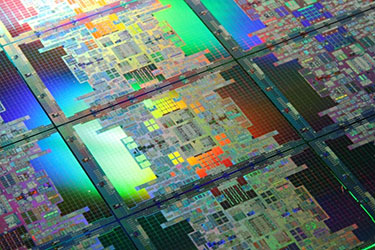
Most people who trade will probably never own software as demanding as trading software. Most non-trading software uses a static set of data but
trading software uses a lot of new data which is streaming into it, requiring constant calculations and updating of the display. If the market
is very active and you are using a standard home & office
PC for your trading computer then it will typically fail to keep up
during busy market periods because the microprocessor in
it is not powerful enough to handle that much work.
Some processors are more efficient than others, for example Intel processors will perform at least 35% more calculations than AMD processors
if both processors are running at the same speed (in GHz). Also, older generations of processors will be much less efficient at performing
calculations than newer generations of processors when both are operating at the same speed. This means that your
Intel Core2 processor operating at
the same GHz speed as a new Intel processor will be at least 33% inferior in performance.
The newest Intel processors have what is called a "Turbo Boost" mode. This allows the processor to attain speeds that were not
available with earlier processors, providing
that certain conditions are met. Building a
trading computer which meets the strict thermal and electrical
requirements for turbo boost mode is important as it will unlock much more processing power to keep your computer from falling behind the
market during periods when the market is very
active. The best processors for
a trading computer are the Intel Ivy Bridge-E and the high end
Intel Ivy Bridge or Intel Haswell family of processors.
Main Board / Motherboard
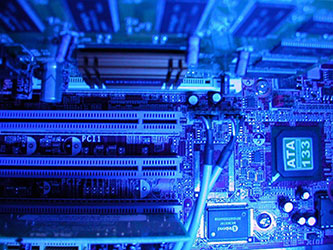 The motherboard is one of the most important components in a good quality trading computer, and it can make or break a system. You can use the
best processor, memory, and graphics card but without a quality motherboard as the foundation of your system your
trading computer's performance will be limited.
The "chipset" used to build the motherboard is very important as it is the core of a good motherboard. To get the full power of the processor,
graphics card, and memory you should get a motherboard with the best chipset available that matches your processor. Lower end chipsets for Intel processors
will have little or no turbo boost mode
functionality with the lower end chipsets. The turbo mode is very important when the market is moving fast
during peak trading volume periods of the day. The best chipsets for maximum
trading computer performance are the Intel Z77, Z87, and X79. All other Intel chipsets will have reduced
turbo mode performance.
The motherboard is one of the most important components in a good quality trading computer, and it can make or break a system. You can use the
best processor, memory, and graphics card but without a quality motherboard as the foundation of your system your
trading computer's performance will be limited.
The "chipset" used to build the motherboard is very important as it is the core of a good motherboard. To get the full power of the processor,
graphics card, and memory you should get a motherboard with the best chipset available that matches your processor. Lower end chipsets for Intel processors
will have little or no turbo boost mode
functionality with the lower end chipsets. The turbo mode is very important when the market is moving fast
during peak trading volume periods of the day. The best chipsets for maximum
trading computer performance are the Intel Z77, Z87, and X79. All other Intel chipsets will have reduced
turbo mode performance.
Cooling
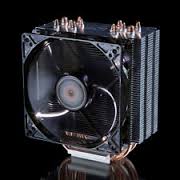
An often overlooked and under-appreciated side of building a trading computer is cooling for the processor. The processor will not speed up to
turbo mode when you need it without a good cooler. The standard Intel cooler is not good enough to sustain a prolonged (more than a few seconds)
run into turbo boost mode.
A reliable cooler is also important, which is why we avoid the lower cost pre-packaged water cooling systems from Intel, Corsair, and several
others (they are all made by Asetek which has exclusive patent rights to the technology).
We did use those devices at one time but the failure rates are about 5%, which is too high as far as we are concerned. If every component on your
trading computer had a 5% failure rate then you would have a very unreliable
trading computer. Also, you can get air coolers that perform just as well
using properly engineered heat pipe phase
transition technology.
Memory
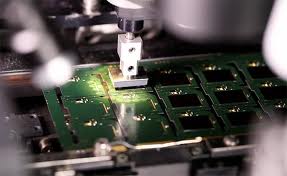
The minimum amount of memory you should get with a new trading computer is 8GB. I would recommend 16GB of memory if you can find it in your
budget because within the lifetime of the computer you will probably need it due to future advances in trading software.
Memory that is a little faster is unlikely to produce any noticeable benefit to your trading computer. Faster memory is usually selected using
a quick test of the memory that comes off the production line. This test is often too quick for a thorough examination of the memory such that
you may find that it causes your trading computer to crash when running it at its full advertised speed. I would recommend getting the most reliable
memory rather than the fastest memory. I have found that memory sticks made with Hynix SDRAM chips are
both fast and extremely reliable.
Power Supply
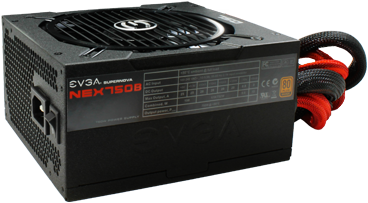
A good power supply will form a solid foundation for years of reliable service for your trading computer. Power supplies compensate for many power
problems that can occur and they need to deliver smooth
direct current power to your trading computer at three different voltages.
The bigger the power supply the better. Larger power supplies do not use more electricity, they just have the ability to supply more power to your
trading computer if they need to. Over time your power supply will get dusty inside and
dust will act as insulation, causing the components run at a higher temperature. By buying
a trading computer with an oversized power supply it will perform smoothly and last a long time, even if it is covered with dust.
Graphics Cards
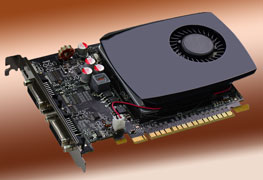
There are two modes of graphics card operation: 2D and 3D. 2D is used for most purposes like email, Internet surfing, office software, and
trading software. 3D is used by computer games. Some graphics cards that are excellent at 3D gaming may just be average at 2D graphics. There
are some expensive 2D graphics cards (like the Quadro NVS 510) that are outstanding at 2D graphics and have very little 3D gaming ability.
ThinkOrSwim recommends very high end graphics cards to run their software properly but most other trading programs only require mid-priced graphics
cards to perform all that is needed for traders. I usually use two or three graphics cards in my trading computers to run all the monitors
that I like to use.
Hard Drives
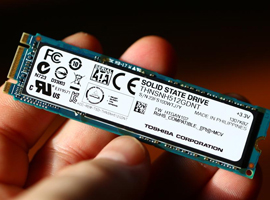
For a trading computer you should always use a Solid State Hard Drive (SSD) from a reliable brand name. Many SSD's are unreliable but the reliability
of SSD's has been improving. I like Intel and Samsung SSD's the best.
SSD's are much faster and more reliable than conventional spinning hard drives. SSD's should never ever be defragmented as this will lead to
reduced performance and eventually to premature failure.
Internet Speed
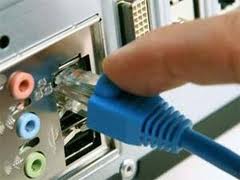
A lot of people ask me how they can make their Internet speed faster and they suggest buying more bandwidth will get them a faster Internet
connection. Bandwidth is "how much" not "how fast". Beyond a certain point you are wasting your money buying more bandwidth.
I recommend a robust package from your cable company (not phone company).
10 gigabits or more of download bandwidth is
common and more than enough for trading.
Noise
Powerful computers need more fans to keep them cool than cheap computers so you should not expect a trading computer to be as quiet as an
inexpensive home & office computer. If you have a very quiet room for your trading computer then you may want to get a trading computer
that has been fitted with sound proofing materials and special low noise fans (Falcon Trading Comptuer offers this on all their models.).
Laptops with
more powerful processors in them will make much more noise than a desktop but if your laptop is really loud then it probably is
choked with dust and needs to be cleaned.
Backups
I recommend image backups
(Paragon or Acronis software) for your trading computer. An image backup exactly copies the entire drive and stores it as a
really big file on a backup hard drive.
Image files are too big to backup to cloud storage.
Image files can be used to combat viruses, weird problems with Windows and
to quickly recover from a hard drive failure.
Warranty
Good technical support will help you shake off all kinds of computer bugs that can hold back your trading computer. Falcon trading computers offer outstanding
technical support for as long as you own the computer.
If you trade real money then you should have a warranty with on-site repair service. If you need to box up and send in your trading computer for repair every time
something goes wrong then you could lose a lot of opportunity money while you wait for your trading computer to return from
being repaired.
Multiple Monitor Setups
Monitor Size & resolution
The size of the monitor in conjunction with the resolution of the monitor determines how much stuff you can show on a monitor and how big it will be.
Every flat panel monitor is composed of tiny pixels that create the image. Each pixel is actually a set of three sub-pixels that create all the colors
that are possible on that monitor. It is the number of pixels on the monitor that will give it the ability to show you what you want to see.
If you buy a larger monitor but you don't increase the number of pixels then you will see everything larger but you will not be able to display more
things on it. Given the same pixel count, younger people will usually prefer smaller monitors and older people larger ones. Desktop monitors
smaller than 19.5" or larger than 27" are generally not suitable for trading purposes.
Professional and private traders typically use six or eight monitor systems to trade with. Very active retirees usually use 3-6 monitors depending on their
account size and style. The more times you trade per month the more monitors you will generally own.
Types of Monitors
Most monitors are Twisted Nematic (TN) and are used successfully by most traders. The have a fast response time, cost less, use less energy but
have a smaller range of viewing angles to see them well.
Monitors should have square sides and must have a removable base and a VESA compliant mount on the back to put on a monitor stand. Not all
monitors meet these requirements and should be checked before purchasing.
Monitor Bases and Stands
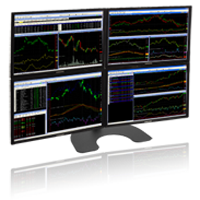 A monitor base is what comes with the monitor from the factory. Most monitors have an inexpensive base that allows for very little adjustment.
Monitors with fully adjustable bases are available and are a good idea if you don't plan on using a
multi-monitor stand.
Multi-monitor stands offer you the ability to create a very professional setup composed of several monitors mounted on a framework that is
attractive and efficient.
Types of Monitor Cables and Connections
Most computer monitors use the VGA and DVI types of connections. If you computer has an HDMI connection then you can
buy an HDMI to DVI cable to hook it up to your monitor(s).
Some large monitors use other types of connections such as Display Port and Thunderbolt. Some very large and expensive
monitors may require Display Port and Thunderbolt. If you are buying an unusual monitor then you will need to check
that it will work with your computer.
|



 The motherboard is one of the most important components in a good quality trading computer, and it can make or break a system. You can use the
best processor, memory, and graphics card but without a quality motherboard as the foundation of your system your
trading computer's performance will be limited.
The "chipset" used to build the motherboard is very important as it is the core of a good motherboard. To get the full power of the processor,
graphics card, and memory you should get a motherboard with the best chipset available that matches your processor. Lower end chipsets for Intel processors
will have little or no turbo boost mode
functionality with the lower end chipsets. The turbo mode is very important when the market is moving fast
during peak trading volume periods of the day. The best chipsets for maximum
trading computer performance are the Intel Z77, Z87, and X79. All other Intel chipsets will have reduced
turbo mode performance.
The motherboard is one of the most important components in a good quality trading computer, and it can make or break a system. You can use the
best processor, memory, and graphics card but without a quality motherboard as the foundation of your system your
trading computer's performance will be limited.
The "chipset" used to build the motherboard is very important as it is the core of a good motherboard. To get the full power of the processor,
graphics card, and memory you should get a motherboard with the best chipset available that matches your processor. Lower end chipsets for Intel processors
will have little or no turbo boost mode
functionality with the lower end chipsets. The turbo mode is very important when the market is moving fast
during peak trading volume periods of the day. The best chipsets for maximum
trading computer performance are the Intel Z77, Z87, and X79. All other Intel chipsets will have reduced
turbo mode performance.






 A monitor base is what comes with the monitor from the factory. Most monitors have an inexpensive base that allows for very little adjustment.
Monitors with fully adjustable bases are available and are a good idea if you don't plan on using a
multi-monitor stand.
A monitor base is what comes with the monitor from the factory. Most monitors have an inexpensive base that allows for very little adjustment.
Monitors with fully adjustable bases are available and are a good idea if you don't plan on using a
multi-monitor stand.